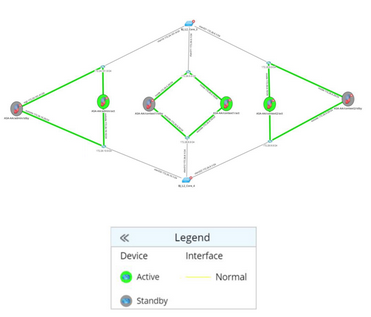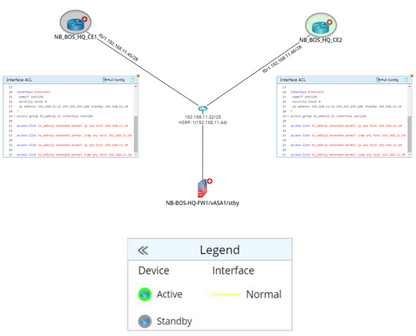Scheduling Qapp/Gapp for Problem-Based Monitoring
In network daily operations, many issues cannot be forecasted, and troubleshooting Qapps cannot be executed in advance. With this function, you can flexibly schedule Qapp/Gapp execution against the area where network issues previously occurred, and leave it unattended for continuous monitoring. When potential threats are found, you will get automatic alerts to fix them faster, so that the same accident can be avoided.
Use Case
▪Problem-Based Monitoring on Core Devices or Traffic Paths
For example, application outage previously occurred because the interfaces on active/standby firewall were both down. Schedule a Qapp “Monitor ASA Failover status” to continuously monitor the core application path. When the interface on the active firewall is down again, the path will change; if the interface on the standby firewall is down either, the path will fail. No matter what the situation is, alerts can be pushed to engineers. With the context of root-cause analysis, engineers can quickly fix the issue to avoid the same accident.

▪Best Practice Enforcement for Compliance/Security Check
Configuration standards are always required to be followed in one organization, but either compliance check or security check is tedious and time-consuming. With this function, all the checks can be scheduled and automatically executed regularly to verify whether network devices meet certain standards across the board, and a report will be generated to list all devices that failed to comply. For example, core switches configured with HSRP usually have redundancy (active/standby) to prevent single-point-of-failure. Schedule a Qapp to regularly check whether the standby switch has been configured with the same ACL as the active switch does.

The chapter covers the following topics:
▪Customizing Built-in Qapp Task
